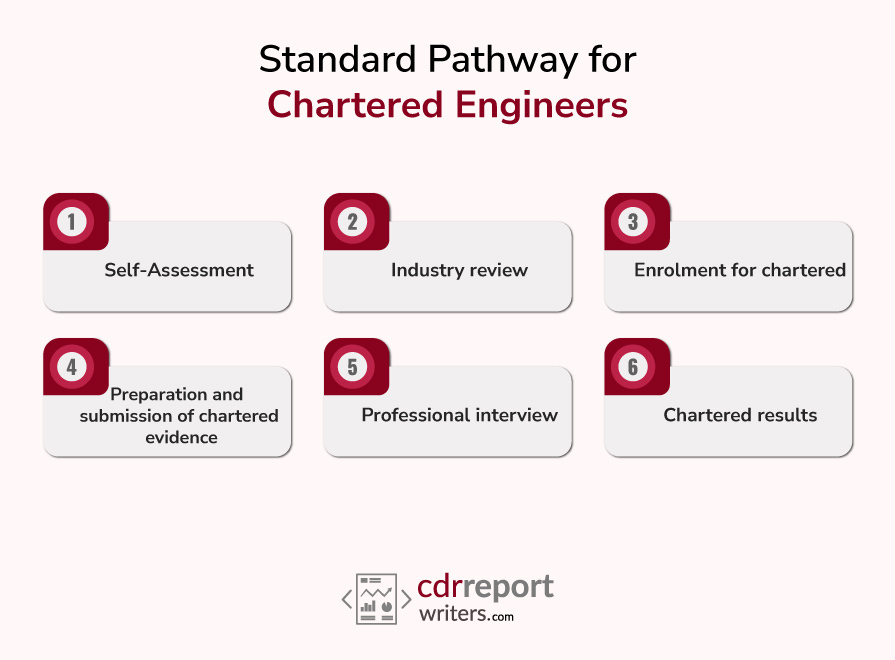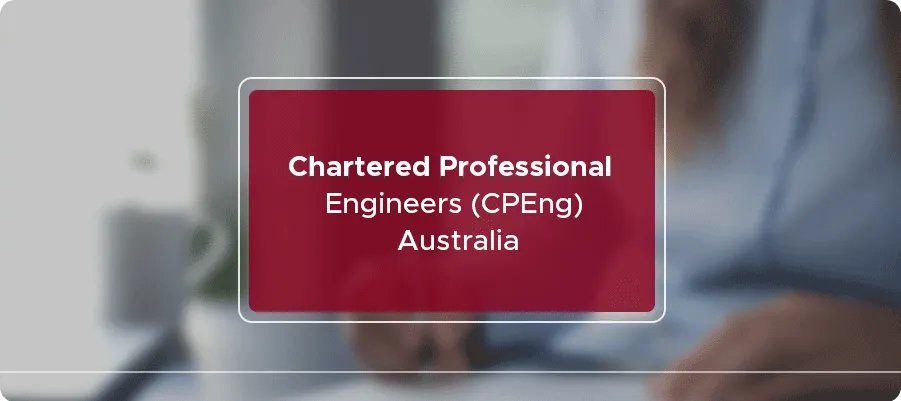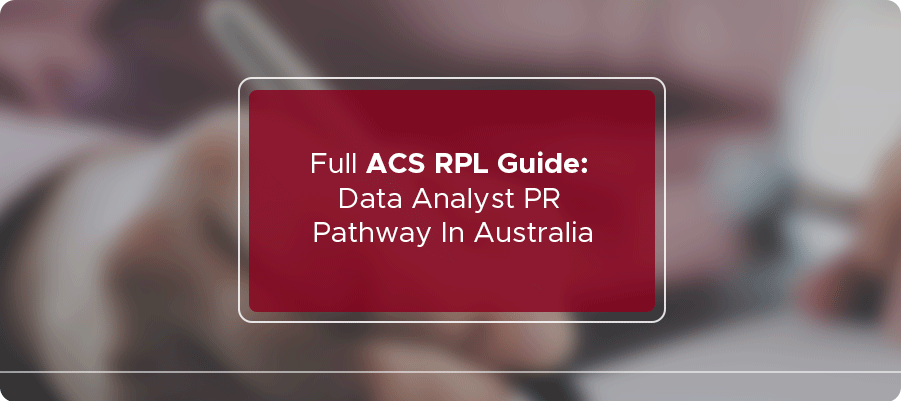
How to Become a Chartered Engineer in Australia?
Are you an engineer looking to advance your career in Australia? Becoming a Chartered Engineer is one of the most prestigious ways to do so. Chartered Engineers in Australia get recognized as experts in their field, with a high level of technical skill and professional competence.
To achieve this certification, you’ll need to meet specific requirements and demonstrate your expertise through a rigorous assessment process by Engineers Australia, the professional body representing engineers in Australia.
Being a chartered engineer in Australia is a beautiful way to jumpstart your engineering career and establish yourself as a professional, experienced, and skilled engineer in your field of practice.
Your chartered certificate provides an easy way to worldwide opportunities as a respected engineering consultant, manager, and leader because Australian chartered engineers are recognized globally.
In this blog, we’ll take a closer look at what it takes to become a Chartered Engineer in Australia, including the areas of practice and requirements to help you succeed. The chartered credential is available in three different occupational groups.
- Chartered professional engineer
- Chartered engineering technologist
- Chartered engineering associate
All mentioned occupational groups have a similar application procedure; however, the competency components may change.
You must fulfill EA’s basic standards to be eligible for a charter. You must be a prequalified professional engineer with at least five years of work experience from Australia or overseas.
You must complete the Stage 1 Assessment: CDR pathway before progressing to your chartered engineer application if you are an overseas candidate from a country not a signatory to the Dublin Accord, Washington, or Sydney Accord.
The Pathways to Becoming a Chartered Engineer
In Australia, there are four primary paths to becoming a chartered engineer. The criteria vary significantly amongst the chartered paths.
- Chartered through the interview: Engineers with 15 years or more of engineering experience are eligible.
- Chartered for defense: Engineers with a Navy Charge Qualification (NCQ) who have worked for the Australian Defence Force in the last 15 years are qualified.
- Chartered through industry review: Engineers with 5-14 years of experience are eligible.
- Chartered for academics: This track is for engineering professionals with significant teaching experience in authorized engineering programs at EA-accredited tertiary institutions.
Standard Pathway to Chartered: Chartered Through Industry Review
Chartered via Industry Review is the most prevalent option, which allows candidates to get chartered status with as little as five years of experience.
Applying for chartered through the interview method is logically inconvenient after accumulating 15 years of experience.
The earlier you start, the better.
The typical approach is a six-step process that includes the following:
- Self-assessment
- Industry review
- Enrolment for chartered
- Preparation and submission of chartered evidence
- Professional interview
- Chartered results

Step 1: Self-Assessment
You must evaluate your proficiency level for each aspect and rank yourself using the following scale during self-assessment:
- Developing: This indicates that you are still studying the competence component. It also means that practicing the element may necessitate supervision.
- Functional: This indicates that you have mastered the aspect and can perform without supervision or help.
- Proficient: This indicates you can act independently and have the authority to oversee and train others.
- Advanced: Can act decisively and independently, lead and train others, and display a high degree of expertise.
Competency areas to be Assessed:
The following competency areas must get appropriately addressed as part of the self-assessment process. A collection of competency elements exists for each competency area.
- Occupational Category: This gets determined by your educational background or specialty area.
One of the various categories, such as professional engineer, engineering technologist, or engineering associate, will be needed.
- Area of Practice: This gets decided by factors including educational background, critical talents, and prior job experience.
It’s worth noting that you can choose from many areas of practice during the self-assessment.
- Personal Commitment: This includes assessing and ranking your degree of ethical competence, as well as displaying a high level of accountability, dedication, and a unique feeling of responsibility for engineering tasks.
- Obligation to Community: This allows you to evaluate your competency based on how you provided safe and sustainable solutions, cared for the community while doing your tasks, controlled risks, and followed all applicable legal and regulatory requirements.
- Value in the Workplace: This allows you to show your ability by demonstrating how you engage and cooperate with others, create value for stakeholders, manage resources, expenses, and budgets, and provide engineering assistance to teams.
- Technical Proficiency: To achieve this skill, you must demonstrate how you use advanced engineering science and engineering knowledge, assess and solve issues, and evaluate the outputs of engineering activities.
Learn More: Skilled Employer Sponsored Regional Visa (Subclass 494) 📖📖
Step 2: Industry Review
The Industry Review procedure gives you comments from engineering experts and organizations that get approved.
After completing the self-assessment, you must establish an Engineers Australia site account to begin the industry review.
Following that, you must choose your employer or chosen sponsoring organization. Note that you can change this later if need be. Qualified organizations have an agreement with EA to support your chartered application. Remember that it will share your industry-review competency ratings with the selected supporting organizations.
You’ll designate industry reviewers online when you’ve created your industry review account.
Then, for each of the 16 competence components, develop your Evidence Statements while considering the following factors:
- Reliability of the provided information
- Validity and verifiability
- Authenticity
- Currency and sufficiency
Each proof statement is limited to 1500 characters (about 200 words).
To begin the review process, you must submit your Chartered Evidence Statements to your industry reviewers.
Step 3: Enrolment for Chartered
After receiving a Functional or better rating, applicants can enroll in the chartered application.
At this point, applicants must pay the Chartered Engineer Australia fee and submit their CV and Continuing Professional Development record.
The applicant should have completed and submitted their industry review by this time.
In addition, the candidate must specify the areas of knowledge they want to pursue chartered status.
Area of Practice:
The Area of Practice may get looked at as their “mission.” It merely shows the applicant’s desired field of work. In various sectors of practice, the candidate can become a Chartered Engineer.
System Engineering, Project Management, Civil Engineering, Asset Management, and Environmental Engineering are just a few of the areas of practice offered by Engineers Australia.
Learn More: Become an Australian Permanent Resident ✈️✈️
Step 4: Prepare and Submit Chartered Evidence
Start by going over the chartered evidence matrix to understand the criteria better.
To submit to EA, create and collect a portfolio of chartered proof.
The following are examples of chartered evidence:
- CPD Log: It comprises all of the training programs you’ve completed.
- Detailed CV: Give specifics about your job, such as your general duties, specific projects, and significant accomplishments.
- Industry Review Evidence Statements: This is a collection of the updated evidence statements you provided to your reviewers in the industry.
- Chartered Evidence Narratives: These are five-hundred-word reports demonstrating activities or projects’ completion. Use Chartered Evidence Narratives to back up competency aspects that need more documentation to back them up. It’s a fantastic technique to increase your chances of a successful EA.
- Other forms of evidence: Drawings, project reports, computation sheets, pictures, and so on are examples.
Step 5: Professional Interview
Your chartered procedure concludes with a professional interview.
It allows you to verify the chartered proof you supplied during your chartered enrollment.
The interview also allows the assessor to dig further into your proficiency using the approved proof you’ve supplied.
The EA assessor will endeavor to validate the chartered evidence by asking questions about essential areas already addressed in the evidence-based prior chartered applications.
In addition, the interviewer may identify and inquire about competency areas that need to be adequately addressed based on the evidence supplied.
The professional interview process might be complicated, but by following the five guidelines below, you can make it much more straightforward:
- Have a better grasp of EA rules; read them first.
- Ascertain that each chartered evidence statement fully addresses the competency aspect for which it got developed.
- Examine the chartered evidence, including a CV, CPD, and narratives.
- Designs, reports, and other documents to confirm genuine, accurate, and verifiable
- Take the time to go over all of the papers as chartered proof and learn more about them. It will rejuvenate you and allow you to answer all interview questions effortlessly.
- If feasible, hire a specialist to help you with data and the preparation/compilation of required papers.
Step 6: Chartered
After the professional interview, you will obtain a favorable conclusion and authorization to practice as a chartered engineer.
As a chartered engineer, engineering technologist, or engineering associate, you’ll get a global reputation and many options.
Engineers Australia’s Key Benefits of Becoming a Chartered Engineer
The following advantages are available to chartered engineers:
- Global Recognition: Engineers who have earned chartered status with EA are acknowledged internationally for their professionalism, experience, abilities, and educational qualifications.
- As a result, chartered engineers can work with businesses worldwide as long as they have the appropriate work permissions.
- Leadership and Career Development: Chartered engineers can improve their competencies by examining the industry review process based on industry standards.
- Engineers must demonstrate that they fulfill all 16 competency requirements to get chartered status.
- Professional Recognition: Professional organizations, governmental and non-governmental entities, and businesses worldwide recognize Chartered Engineers. As a chartered engineer, you can work as a senior engineer or consultant in any nation.
Learn More: Who is eligible to apply CDR for skilled visa migration? 🧑🏽✈️🏆
Conclusion
We can guide you through becoming a chartered engineer in Australia. Based on our years of experience in assessing intake, we have skilled writers who will assist you in creating your report on demand. CDRReportWriters may provide a CDR report to engineers interested in relocating to Australia. Our qualified specialists can help you with CDR writing and review, Career episodes, Summary Statements, and CDP writing.





